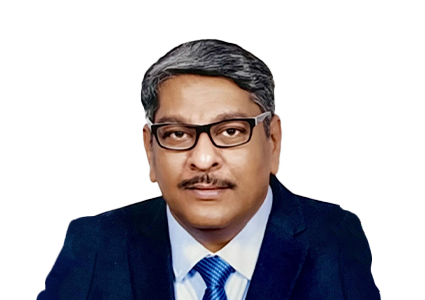Published on May 24, 2019 by Vinod Kavali and Kumail Jillisger
The United Nations Office on Drugs and Crime estimates only 1% of the money laundered annually (US$800 billion to US$2 trillion) is confiscated. This is too minuscule an amount, given the efforts of law enforcement and regulatory bodies in fighting money laundering. Financial institutions are considered the first line of defense in this fight. At one end, financial institutions have been increasing their budgets (both people and technology), and at the other end hefty penalties are levied on them for non-compliance with KYC, AML, and sanctions (over US$30 billion in 10 years).
Does this mean we are winning a few battles, but losing the war against money laundering? Why are professional money launderers (PML) faring better than anti-money-laundering professionals (AMLP)?
Team: Both PMLs and AMLPs are experts in designing money laundering frameworks and anti-money-laundering policies and procedures, respectively. The stark difference is visible at the level of foot soldiers. Financial institutions deploy large teams of L1 analysts, but they comprise resources who are generalists and not specialists (in law, finance, or economics). More often than not, the team consists of resources who have just secured their first job. Compare this with PML foot soldiers, who are apt at finding newer loopholes.
Training: Financial institutions design training programs that focus on theory, at times conducted by seniors in the team. The training program focus on different checks and balances, it fails to explain different AML typologies and specific checks on how to identify and mitigate risk. It is also easy for PMLs to get their hands on training manuals and know exactly what the AMLPs look for.
Process: There always exists pressure on businesses to activate new accounts faster than before, on sales to take exception approval thereby reducing the outreach to the client, and on resources to complete reviews within agreed timelines. This has led to compartmentalizing a process, more a factory model where work is divided in to many parts to achieve standardization and faster processing. How many L1 resources have a holistic view of a customer? How many of us perceive ourselves as an investigator and not an analyst?
Technology: PML are miles ahead of AMLP in adapting next-generation technologies. Financial institutions are debating on the effectiveness of artificial intelligence/machine learning in transaction monitoring, whereas PML are already using cryptocurrencies as a money-laundering tool. When will financial institutions and regulators catch up on technology?
What would it take to:
-
Hire specialists? Hire resources who understand nuances of regions and practices?
-
Shift the training approach from theoretical to practical? Have law enforcement/regulators impart training?
-
Incentivize AMLP to become investigators?
-
Use technology to exchange red flags among financial institutions on a near to real-time basis?
These measures, if implemented would increase financial institutions’ budgets. At the same time, it will not be an understatement to say we will witness a proportional reduction in fines. No matter what the challenges are, AMLPs will fight every battle, and every battle won will hold protect the last frontier .
How can Acuity Knowledge Partners Services help you?
Acuity’s brings together a combination of people, data, and technology to strengthen financial institutions’ first line of defense by providing customized solutions for their KYC/AML framework. Explore our bespoke services for due diligence reporting and transaction monitoring support.
What's your view?
About the Authors
Vinod Kavali has over 10+ years of experience in compliance, having worked for various firms including Dell and Goldman Sachs. His expertise spans across the risk and compliance sector, focusing on know your customer (KYC) and risk management. Vinod has done his graduation in Commerce from University of Madras.
As Head of Financial Crimes Compliance, Kumail Jillisger is responsible for understanding client problem statements related to KYC, AML & Fraud and designing optimum solutions; transitioning engagements related to KYC due diligence, AML transaction monitoring and fraud investigations; managing governance and risk reporting for existing engagements; and identifying technology use cases with both internal and external data providers. Kumail leads a team of experts in UBO identification, Sanctions, Sanctions Exposure, Money Laundering, Anti Bribery & Corruption and Taxation related adverse news.
Before joining Acuity Knowledge Partners, he served as the Deputy Head of Delivery (BFS Compliance and KYC/AML) at L&T Infotech. He has also worked at VITEOS Capital Market..Show More
Comments
31-May-2019 07:12:47 am
This is an eye opening article for both financial institutions and govt to fight money laundering and black money. True amlp\'s are way behind in using technology. Good article guys keep it up.
Like the way we think?
Next time we post something new, we'll send it to your inbox









